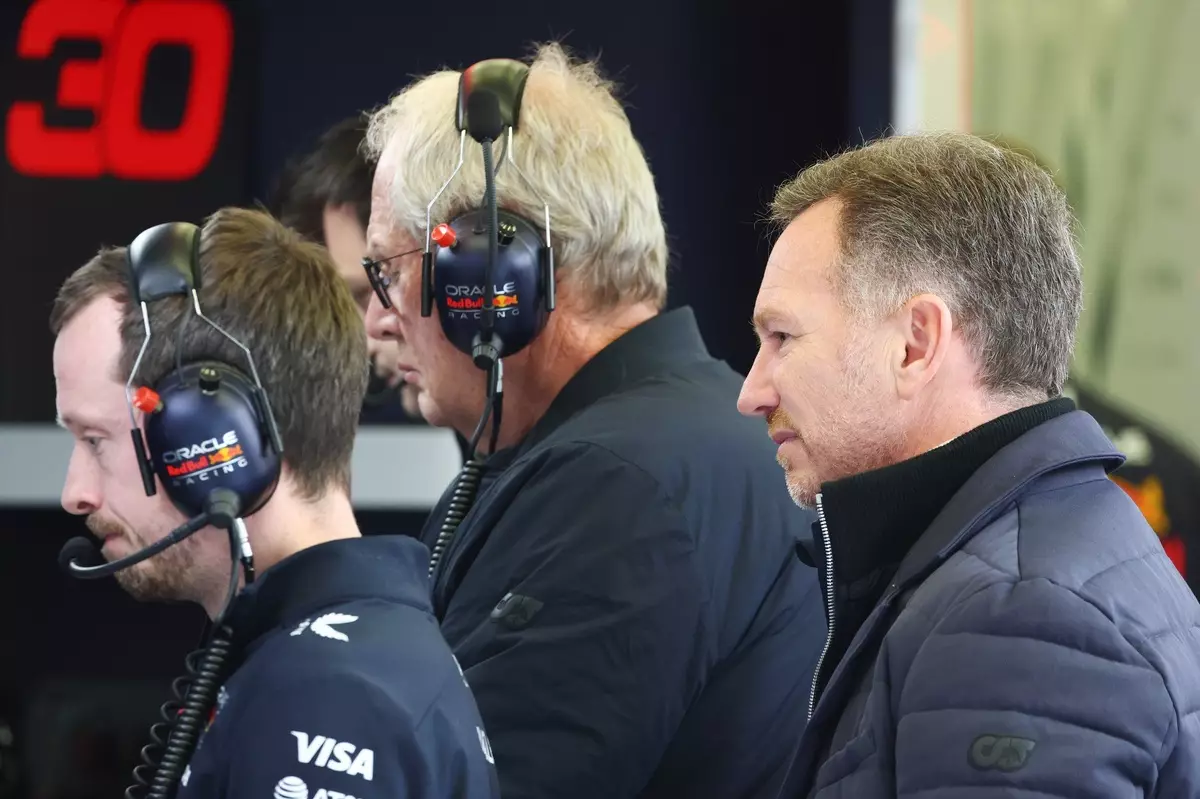In the high-octane world of Formula 1, where microseconds determine glory or failure, the ability to interpret and analyze data accurately is paramount. Christian Horner, Team Principal of Red Bull Racing, has recently painted a picture of dysfunction within his team, likening it to “looking at two different watches.” This metaphor encapsulates a severe rift between wind tunnel testing and the practical realities faced on the racetrack. Despite securing a victory in the Japanese Grand Prix, the looming issues that dogged Red Bull throughout the previous season are resurfacing, suggesting that triumph is often eclipsed by an underlying instability.
The foundation of this dilemma stems from discrepancies between simulated data and real-world performance. Historically, Red Bull has dominated the circuit, driven by flawless aerodynamic efficiency and rapid on-track adaptations. However, with the onset of the new year and stiff competition from teams like Haas and Mercedes, it seems that Red Bull’s once unparalleled advantage has given way to vulnerabilities. The team is facing an existential crisis, wherein past achievements serve as both a foundation and a weight, as expectations spiral amidst the ongoing lack of correlation between laptop simulations and physical performance.
Navigating the Current Climate of Competitiveness
The 2025 racing season represents a pivotal juncture, as it is the final year of a set of technical regulations that, while stable, have confined the scope for substantial innovation. Teams are seeking marginal gains in a fiercely competitive environment, and many have made notable progress during the offseason. However, Red Bull finds itself fighting an uphill battle to realign its understanding of its own car’s capabilities. The technical struggles highlighted by Horner reveal an inability to interpret crucial aerodynamic data, shaping the performance envelope of the car as it approaches the tight intricacies of race tracks.
Max Verstappen, who is still the reigning world champion, is caught in a web of technical maladies that the team must unravel. Horner’s candid admission of the challenges related to the entry phase of corners illustrates a fundamental airborne deficiency that must be addressed to restore Verstappen’s confidence and racing prowess. The solution lies not just in correcting immediate performance issues but in interpreting complex data inputs accurately and making informed decisions based on that intelligence. In this up-hill struggle, the hope rests on accumulating enough empirical data from recent races to gain clarity and drive actionable solutions.
The Race Against Time
In the realm of Formula 1, time is an ever-elusive resource. As teams work tirelessly to understand the misalignment of their analytical tools, they must also prepare for a fierce championship fight in a world where milliseconds can make the difference between a podium finish and a retiring car. Horner’s acknowledgment of the gaps in correlation between the wind tunnel outputs and track performance captures the urgency of the situation. The misconceptions bred from inaccurate data not only hinder Red Bull’s progress but could jeopardize its standing in the championship.
The impending transition to a new season of regulations in 2027 adds an additional layer of complexity. Red Bull has ambitious plans for a new wind tunnel facility poised to enhance their aerodynamic understanding. However, current limitations dictate that this new technology won’t be available for another couple of years. This has prompted suggestions that Red Bull must maximize their performance with the existing parameters, while simultaneously laying the groundwork for future innovation. It’s a delicate balancing act: ensuring immediate competitiveness while developing capabilities that align with ambitious long-term goals.
Pushing Forward: The Importance of Adaptability
As Red Bull confronts these technical challenges, adaptability becomes a crucial asset. Every team in Formula 1 is constantly evolving, reacting quickly to both successes and failures. The ability to leverage real-time data for immediate decision-making will ultimately determine whether Red Bull can reclaim its former glory. This adaptability is not merely a reaction to immediate obstacles; it’s about cultivating a culture of innovation that thrives on challenges.
Moreover, the diversity of skills within the technical team could prove to be the linchpin in this resurgence. Red Bull has produced some of the most innovative cars in recent years, driven by a strong technical foundation. Horner’s confidence in his engineers signals a crucial belief that these challenges can be overcome. It emphasizes the strength of teamwork in navigating data-driven discrepancies and the will to transform capitalizing moments of crisis into invaluable learning experiences.
With the clock ticking down on 2025 and the championship battle roaring ahead, Red Bull Racing is at a crossroads. The desire to innovate, adapt, and improve must coalesce into a strategy that not only addresses current woes but lays the groundwork for future success in a sport that never waits for anyone.

